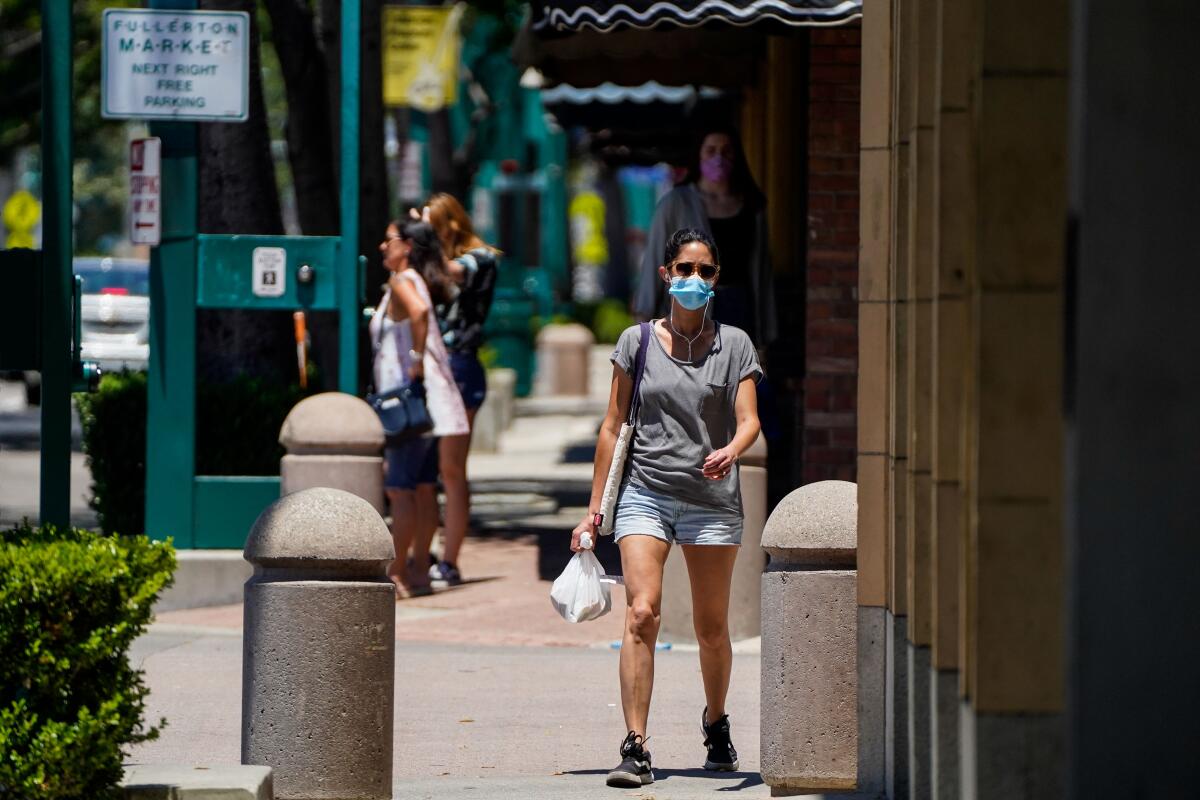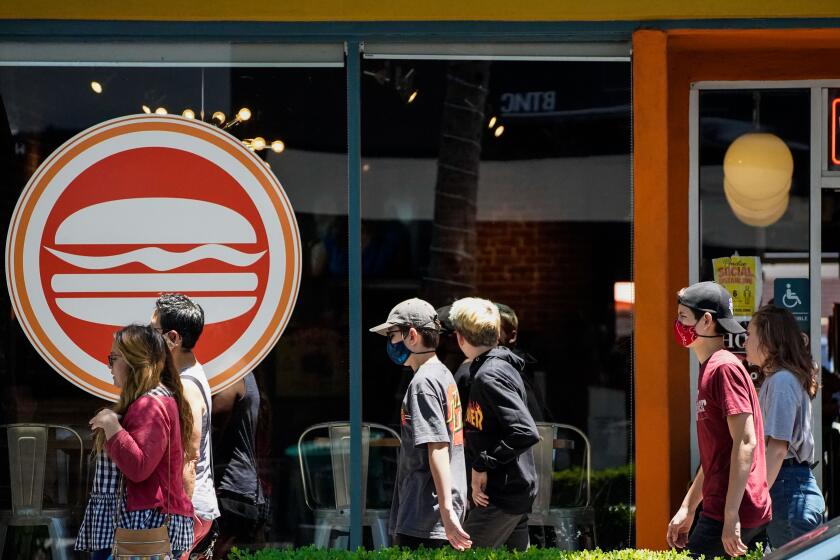This is where you now must wear a mask in California under sweeping new rules

- Share via
SACRAMENTO — California is now requiring that residents wear masks in many public settings to slow the spread of coronavirus.
Until now, state public health officials had only recommended — not required — that Californians wear face coverings, which have been shown to decrease the chances of a person who’s wearing one from spreading the virus to others. Some local officials, including in Los Angeles County, have required the use of face coverings when conducting essential business and even sometimes when outdoors. Other counties, however, have shunned the mandate.
The new order marks a major shift in California counties — including Orange, Riverside and San Bernardino — that do not have mask requirements. The rules will now be statewide.
Some residents are revolting against rules forcing them to wear masks in public, creating new coronavirus dangers
Here is when and where masks are required
• Inside, or in line to enter, any indoor public space.
• Obtaining health-related services including, but not limited to, a hospital, pharmacy, medical clinic, laboratory, physician’s or dental office, veterinary clinic, or blood bank.
• Waiting for or riding on public transportation or paratransit or while in a taxi, private car service, or ride-hailing service vehicle.
• Engaged in work, whether at the workplace or performing work off site, when interacting in-person with any member of the public.
• Working in any space visited by members of the public, regardless of whether anyone from the public is present at the time.
• Working in any space where food is prepared or packaged for sale or distribution to others.
• Working in or walking through common areas, such as hallways, stairways, elevators, and parking facilities.
• In any room or enclosed area where other people (except for members of the person’s own household or residence) are present when unable to physically distance.
• Driving or operating any public transportation or paratransit vehicle, taxi, or private car service or ride-hailing vehicle when passengers are present. When no passengers are present, face coverings are strongly recommended.
• While outdoors in public spaces when maintaining a physical distance of six feet from persons who are not members of the same household or residence is not feasible.
Here is who is exempt from wearing masks
• Children 2 years or under. Children this young must not wear a face covering because of the risk of suffocation.
• Persons with a medical condition, mental health condition or disability that prevents wearing a face covering. This includes persons with a medical condition for whom wearing a face covering could obstruct breathing or who are unconscious, incapacitated or otherwise unable to remove a face covering without assistance.
• Persons who are hearing impaired, or communicating with a person who is hearing impaired, where the ability to see the mouth is essential for communication.
• Persons for whom wearing a face covering would create a risk related to their work, as determined by local, state or federal regulators or workplace safety guidelines.
• Persons who are obtaining a service involving the nose or face for which temporary removal of the face covering is necessary to perform the service.
• Persons who are seated at a restaurant or other establishment that offers food or beverage service, while they are eating or drinking, provided that they are able to maintain a distance of at least six feet from persons who are not members of the same household or residence.
• Persons who are engaged in outdoor work or recreation such as swimming, walking, hiking, bicycling or running, when alone or with household members, and when they are able to maintain a distance of at least six feet from others.
• Persons who are incarcerated. Prisons and jails, as part of their mitigation plans, will have specific guidance on the wearing of face coverings or masks for both inmates and staff.
The California Department of Public Health previously issued these guidelines for cloth masks:
- Face coverings can be made out of cloth, factory-made or hand-sewn, or improvised using bandannas, scarves, T-shirts, sweatshirts or towels.
- The material should cover both the nose and mouth.
- Ideally, face coverings should be washed after each use. Dirty masks should be placed in a dedicated laundry bag or bin.
- Use detergent and hot water when washing cloth masks, and dry them on a hot cycle.
- Be sure your mask is comfortable; you don’t want to have to keep adjusting the mask, because that means touching your face.
- Wash your hands, or use hand sanitizer, before and after touching your face or face coverings.
- If you must wear your cloth face covering again before washing it, wash your hands immediately after putting it back on and avoid touching your face.
More to Read
Sign up for Essential California
The most important California stories and recommendations in your inbox every morning.
You may occasionally receive promotional content from the Los Angeles Times.















